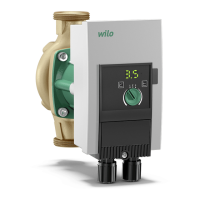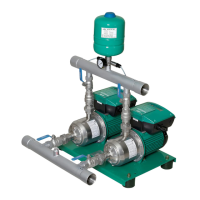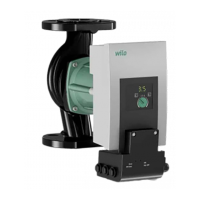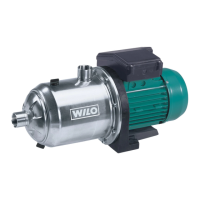9 Maintenance
Maintenance and repair work should be carried out by
qualified personnel only.
WARNING! Danger of electric shock!
Any danger from electrical current should be ruled
out.
• The pump should be electrically isolated and secured
against unauthorized switch-on prior to any
maintenance or repair work.
• Any damage to the connection cable should always be
rectified by a qualified electrician only.
WARNING! Risk of scalding!
At high fluid temperatures and system pressures,
allow the pump to cool down first and then
depressurise the system.
9.1 Routine maintenance and frequency of
inspection
Centrifugal pump requires very little routine
maintenance; however, serious troubles can be often
avoided by regular observation and analysis of various
working parameters. Some of the routine maintenance
checks for this purpose are as under:
• To keep daily logbook records of working parameters like
suction and discharge pressure, flow rate, current drawn,
bearing temperature, etc. These parameters should be
recorded twice a shift. Any sudden change should be a
signal for investigation. Refer Section Maintenance &
Inspection log.
• Check bearings for normal temperature. See 8.3.3 Pg. No.
20
• Vibration & sound level readings should be taken once in
a fortnight and values compared with that of previous
records.
• Check that there is sufficient leakage from the gland
packing to ensure proper cooling and lubrication. (if
applicable) For mechanical seal, check that there is no
visible leakage.
• For any abnormality observed from the visual/ manual
inspection and through maintenance & inspection logs,
stop the pump and investigate.
• Fault finding - Many of the common faults which occur on
centrifugal pumps and which can be diagnosed by
observations are given in the chart under section 10
Faults, causes and remedies.

